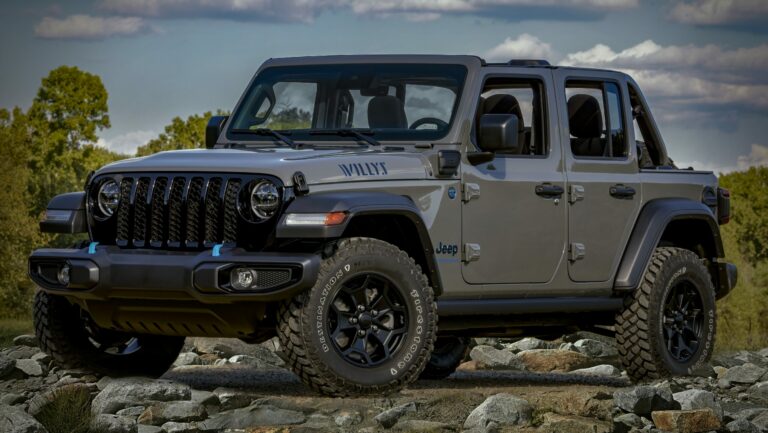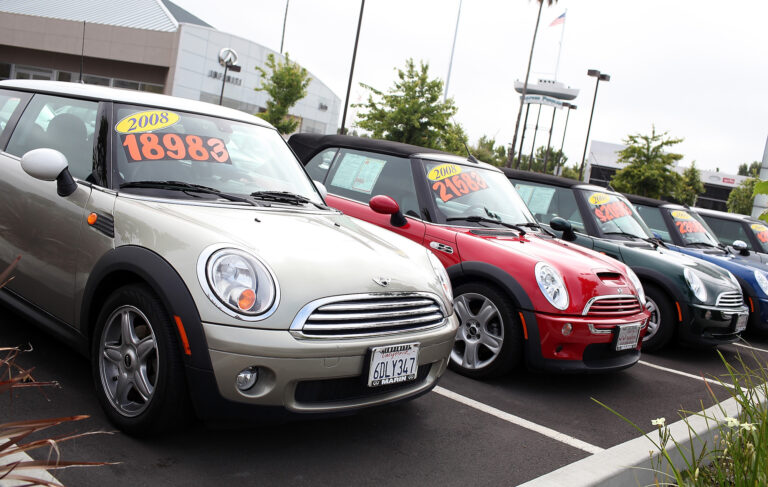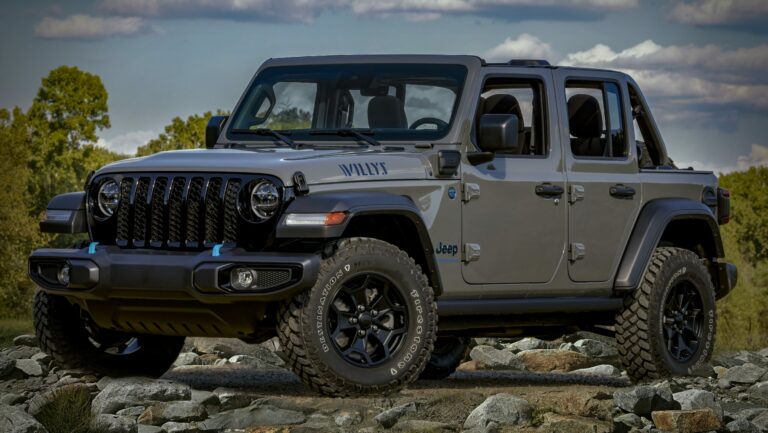1986-96 Jeep For Sale: Your Comprehensive Buyer’s Guide
1986-96 Jeep For Sale: Your Comprehensive Buyer’s Guide jeeps.truckstrend.com
Introduction: The Enduring Appeal of Vintage Jeeps
The decade spanning 1986 to 1996 represents a golden era for Jeep, introducing some of the most iconic and beloved models that continue to dominate trails and city streets today. This period saw the transition from the CJ to the Wrangler YJ, the rise of the revolutionary Cherokee XJ, and the introduction of the more refined Grand Cherokee ZJ, alongside the unique Comanche MJ pickup. These vehicles are not just old cars; they are rugged, capable, and character-filled machines that offer a distinct driving experience and a strong connection to automotive history.
1986-96 Jeep For Sale: Your Comprehensive Buyer’s Guide
For many, the appeal lies in their simpler mechanics, legendary off-road prowess, and an aftermarket support system that rivals modern vehicles. Whether you’re a seasoned off-roader, a classic car enthusiast, or someone seeking a reliable and customizable daily driver with personality, a 1986-96 Jeep offers immense value. This comprehensive guide will navigate you through the various models, what to look for, and what to expect when embarking on your journey to acquire one of these automotive legends.
The Iconic Models of 1986-96
The 1986-96 timeframe encompasses several distinct and highly sought-after Jeep models, each with its own unique characteristics and appeal. Understanding these differences is crucial for finding the right Jeep for your needs.
1. Jeep Wrangler YJ (1987-1995)
The YJ marked a significant departure from its CJ predecessor, most notably by adopting square headlights – a controversial design choice that has since become a distinguishing feature. Built for rugged adventure, the YJ retained the classic Jeep open-air experience with removable doors and a fold-down windshield.
- Key Features: Leaf spring suspension, body-on-frame construction, square headlights, removable soft or hardtop.
- Engines: Early models (1987-1990) often featured the 2.5L I4 or the carbureted 4.2L I6. From 1991 onwards, the venerable fuel-injected 4.0L I6 became the primary engine option, offering more power and reliability.
- Pros: Classic Jeep looks, highly customizable, vast aftermarket support, relatively simple to work on.
- Cons: Rougher ride due to leaf springs, prone to rust in typical Jeep problem areas, older technology (though this is a pro for some).

2. Jeep Cherokee XJ (1984-2001)
While its production started before this period, the bulk of the XJ’s most popular years fall within 1986-96. The XJ is celebrated for its unibody construction, which offered a lighter, more rigid chassis than traditional body-on-frame SUVs. It redefined the SUV segment and remains a favorite for its balance of capability, practicality, and durability.
- Key Features: Unibody construction, compact SUV design, available in 2-door or 4-door configurations.
- Engines: Primarily powered by the robust 4.0L I6 (High Output from 1991), though some early models had a 2.5L I4 or a problematic 2.8L V6.
- Pros: Legendary durability, excellent off-road capability (especially with the 4.0L and proper 4WD system), surprisingly spacious interior, good daily driver potential, enormous aftermarket.
- Cons: Prone to rust (especially unibody frame rails, rocker panels), rear leaf springs can sag, some interior plastics can be brittle.
3. Jeep Grand Cherokee ZJ (1993-1998)
The ZJ introduced a new level of refinement and luxury to the Jeep lineup. While still immensely capable off-road, it offered a more comfortable ride with coil springs at all four corners and a more upscale interior.
- Key Features: Coil spring suspension, more luxurious interior, larger and heavier than the XJ.
- Engines: Available with the 4.0L I6, but also offered powerful V8 options: the 5.2L V8 (318 Magnum) and, for 1998 only, the potent 5.9L V8 (360 Magnum).
- Pros: Comfortable ride, powerful engine options (especially V8s), good for towing, more modern amenities compared to YJ/XJ, capable off-road.
- Cons: More complex systems mean potentially higher repair costs (especially V8s), blend door issues in HVAC system are common, can be heavier on fuel with V8s.
4. Jeep Comanche MJ (1986-1992)
Based on the Cherokee XJ platform, the Comanche was Jeep’s compact pickup truck offering. It shared many mechanical components with the XJ, making it a rugged and versatile workhorse or off-road build platform.
- Key Features: XJ front end with a pickup bed, available in various bed lengths.
- Engines: Shared the 2.5L I4 and 4.0L I6 engines with the XJ.
- Pros: Unique, rugged, useful bed, good off-road capability, many parts shared with XJ.
- Cons: Relatively rare, finding specific body parts can be challenging, prone to rust like the XJ.
Why Buy a 1986-96 Jeep? Benefits and Appeal
The allure of these vintage Jeeps goes beyond simple nostalgia. They offer a compelling package for a wide range of buyers:
- Affordability: Compared to modern Jeeps, these models are significantly more budget-friendly, making them accessible to a broader audience.
- Simplicity & Maintainability: With fewer complex electronics and more mechanical systems, these Jeeps are often easier and cheaper to diagnose and repair for the average DIY enthusiast.
- Unmatched Off-Road Prowess: Jeep’s legendary 4×4 systems and robust chassis designs mean these vehicles are incredibly capable off the pavement, often outperforming many newer SUVs.
- Vast Customization Potential: The aftermarket for YJs, XJs, and ZJs is immense. From lift kits and larger tires to engine swaps and interior upgrades, you can truly make one of these Jeeps your own.
- Classic Status & Character: Owning a 1986-96 Jeep means owning a piece of automotive history. They have a unique character, often turning heads and sparking conversations. They are also starting to gain collector interest.
- Durability: The 4.0L I6 engine, in particular, is renowned for its longevity, often exceeding 200,000 or even 300,000 miles with proper maintenance.
What to Look For When Buying: Important Considerations
Purchasing a vehicle from this era requires a keen eye and a thorough inspection. Here’s a checklist of critical areas to examine:
- Rust: This is the number one enemy of older Jeeps.
- YJ/MJ: Inspect the frame rails, body mounts, spring hangers, rocker panels, floorboards, and the area around the windshield frame.
- XJ/ZJ: Check the unibody frame rails (especially near the front control arms and rear leaf spring mounts), rocker panels, floorboards, rear quarter panels, and door jambs.
- Engine:
- 4.0L I6: Listen for exhaust manifold cracks (a common issue, sounds like a ticking), check for oil leaks (rear main seal is common but not always severe), look for excessive smoke from the exhaust (blue = oil, white = coolant, black = rich fuel mix). Check coolant for signs of oil or rust.
- V8 (ZJ): Look for typical V8 issues like oil leaks, listen for lifter noise, and check for signs of overheating.
- Transmission:
- Automatic: Check fluid color (should be red, not brown or black) and smell (shouldn’t smell burnt). Test all gears, including reverse, and ensure smooth, timely shifts without slipping.
- Manual: Test clutch engagement, listen for grinding noises, and ensure smooth shifts.
- Transfer Case & Drivetrain: Engage 4WD (high and low range) and drive a short distance (on a loose surface if possible) to ensure it engages smoothly and without unusual noises. Check U-joints for play and listen for clunks.
- Suspension & Steering:
- YJ/XJ/ZJ: Check for worn ball joints, tie rod ends, track bar (common cause of "death wobble" in XJ/ZJ), and control arm bushings.
- XJ: Inspect rear leaf springs for sagging.
- ZJ: Check coil springs for cracks.
- Listen for power steering pump whine.
- Brakes: Check for even pad wear, rotor condition, and fluid leaks. Test the parking brake.
- Electrical System: Test all lights, windows, wipers, radio, and HVAC system. Pay close attention to the blend door actuator in ZJs, which is a common failure.
- Interior: Look for excessive wear on seats, carpets, and dashboard. Check for water leaks, especially in YJs.
- Documentation: Request service records, receipts for major repairs, and ensure the title is clean and matches the VIN.
- Pre-Purchase Inspection (PPI): If you’re not mechanically inclined, invest in a PPI by a trusted mechanic, preferably one familiar with Jeeps.
Where to Find Your Vintage Jeep
The market for these older Jeeps is vibrant, and there are several avenues to explore:
- Online Marketplaces: Websites like Craigslist, Facebook Marketplace, eBay Motors, and dedicated Jeep forums (e.g., JeepForum.com, NAXJA.org for XJs) are prime hunting grounds.
- Specialized Forums & Clubs: Joining online or local Jeep communities can connect you with owners looking to sell or trade their vehicles. These often come with better transparency and maintenance history.
- Local Dealerships: Less common for these older models, but sometimes a trade-in might pop up.
- Word of Mouth/Local Ads: Don’t underestimate the power of community. Let friends and family know you’re looking.
- Auctions: Public or online auto auctions can sometimes yield good deals, but require more expertise and risk.
Ownership Tips & Potential Challenges
Owning a 1986-96 Jeep is a rewarding experience, but it comes with certain responsibilities and potential challenges:
- Regular Maintenance is Key: These are older vehicles. Regular oil changes, fluid checks, greasing U-joints, and timely replacement of wear items will significantly extend their lifespan.
- Common Issues: Be prepared for things like exhaust manifold cracks (4.0L), cooling system issues (especially XJ/ZJ), electrical gremlins, and worn suspension components. Many of these are DIY-friendly.
- Parts Availability: For common wear-and-tear items and popular modifications, parts availability is excellent. Less common body panels for MJs or specific trim pieces can be harder to source.
- Community Support: The Jeep community is incredibly supportive. Online forums, social media groups, and local clubs are invaluable resources for troubleshooting, advice, and even finding parts.
- Insurance: Older vehicles often have lower insurance premiums, but consider classic car insurance if the vehicle is in excellent condition or being restored.
- Modifications: While highly customizable, research thoroughly before modifying. Poorly executed modifications can lead to safety issues and costly repairs. Often, buying a stock vehicle and modifying it yourself (or with a trusted shop) is the best approach.
Estimated Price Range for 1986-96 Jeeps
Pricing for these vintage Jeeps varies wildly based on model, condition, mileage, location, and modifications. This table provides a general guide:
| Model | Poor/Parts ($) | Fair/Driver ($) | Good ($) | Excellent/Restored ($) |
|---|---|---|---|---|
| Jeep Wrangler YJ | $1,500 – $4,00 | $4,000 – $8,000 | $8,000 – $15,000 | $15,000 – $30,000+ |
| Jeep Cherokee XJ | $1,000 – $3,00 | $3,000 – $7,000 | $7,000 – $12,000 | $12,000 – $25,000+ |
| Jeep Grand Cherokee ZJ | $1,000 – $3,00 | $3,000 – $6,000 | $6,000 – $10,000 | $10,000 – $20,000+ |
| Jeep Comanche MJ | $2,000 – $5,00 | $5,000 – $10,000 | $10,000 – $20,000 | $20,000 – $40,000+ |
Disclaimer: These are broad estimates. A low-mileage, rust-free example, especially with the desirable 4.0L engine or a V8, will command a higher price. Highly modified vehicles can also vary wildly in value depending on the quality of modifications.
Conclusion: Embrace the Adventure
The 1986-96 era of Jeeps represents a sweet spot for enthusiasts seeking a blend of classic ruggedness, mechanical simplicity, and undeniable character. Whether you dream of a wind-in-your-hair YJ, a go-anywhere XJ, a comfortable ZJ, or the rare utility of an MJ, these vehicles offer an engaging and rewarding ownership experience.
While they demand a thorough inspection and ongoing maintenance, the pay-off is a capable, customizable, and charismatic vehicle that connects you to a rich automotive legacy. Do your research, inspect diligently, and be prepared for an adventure – because owning a 1986-96 Jeep is far more than just owning a car; it’s a lifestyle.
Frequently Asked Questions (FAQ)
Q1: Are 1986-96 Jeeps reliable?
A1: Generally, yes, especially models equipped with the 4.0L I6 engine, which is known for its legendary durability. However, being older vehicles, they will require consistent maintenance and may experience issues related to age, such as rust, worn bushings, and occasional electrical gremlins.
Q2: What’s the best engine option for these Jeeps?
A2: For a balance of power, reliability, and ease of maintenance, the 4.0L inline-six (I6) engine (found in YJ, XJ, MJ, and ZJ) is widely considered the best choice. For the Grand Cherokee ZJ, the 5.2L V8 offers significantly more power for towing and performance, but with slightly higher fuel consumption and potentially more complex maintenance.
Q3: Can I daily drive a 1986-96 Jeep?
A3: Yes, many people daily drive these Jeeps. The Cherokee XJ and Grand Cherokee ZJ are particularly well-suited for daily driving due to their more comfortable ride and enclosed cabins. The Wrangler YJ can be a daily driver, but its rougher ride and less refined interior make it more of an enthusiast’s choice for daily commuting.
Q4: How much should I expect to pay for maintenance on an older Jeep?
A4: Maintenance costs vary greatly depending on the vehicle’s initial condition and how well it was previously maintained. Budget for regular fluid changes, tune-ups, and potential replacement of wear items like brakes, tires, and suspension components. Expect to spend anywhere from a few hundred to a couple of thousand dollars annually, especially if you’re addressing deferred maintenance or performing upgrades.
Q5: Is it hard to find parts for these older Jeeps?
A5: For common mechanical components and popular aftermarket upgrades (lift kits, bumpers, etc.), parts availability is excellent due to the sheer number of these vehicles produced and their enduring popularity. Less common body panels or specific interior trim pieces, especially for the rarer Comanche MJ, might require more searching on specialty sites or salvage yards.
Q6: What is "death wobble" and how do I fix it?
A6: "Death wobble" is a violent, uncontrollable shaking of the front end that typically occurs at highway speeds after hitting a bump. It’s common in solid-axle Jeeps (YJ, XJ, ZJ) and is almost always caused by worn or loose steering and suspension components, such as the track bar, ball joints, tie rod ends, or control arm bushings. Fixing it involves diagnosing and replacing the worn parts, often starting with the track bar.
Q7: Should I buy a modified Jeep or a stock one?
A7: For a first-time buyer, it’s often recommended to buy a stock (unmodified) Jeep. This allows you to assess the vehicle’s true condition without potential issues introduced by amateur modifications. If you want a modified Jeep, ensure the modifications were professionally done with quality parts, and understand how they might affect reliability and maintenance.




